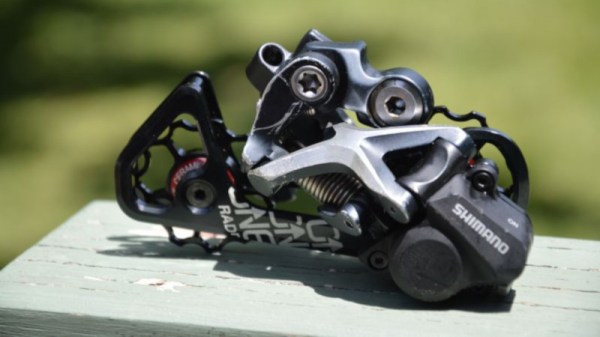Mountain bikers take their sport seriously, and put their bikes through all manner of punishment in the course of a ride. This has given rise to a wide range of specialist equipment, such as suspension, disc brakes and even clutch derailleurs, which help reduce chain slap when riding over rough terrain. However, these specialist derailleurs aren’t available for all applications, so sometimes you’ve gotta hack together your own.
Shimano clutch derailleurs are only really available for 10-speed rear cassettes and up, due to a change in derailleur ratio compared to the earlier 6 to 9 speed cassettes. Using a derailleur designed for 10-speed operation on a rear cassette with fewer gears won’t shift properly.
[SzurkeEg] was inspired by earlier work, and realised that by combining parts from several generations of Shimano hardware, it was possible to build a working clutch derailleur for 6 to 9 speed rear cassettes. The main parallelogram is what handles the positioning of the derailleur, and is sourced from a 9-speed part to get the gear indexes correct.The rest of the parts are sourced from later models with the clutch feature built in.
It’s a smart mechanical hack, and one that isn’t necessarily the most intuitive. But by having a go, and seeing what’s possible, now a whole generation of mountain bikes can tear up the trail like never before. We’ve seen Shimano gear hacked before, too. Video below the break. Continue reading “Mix And Match Parts To Build A Better Mountain Bike Derailleur”














